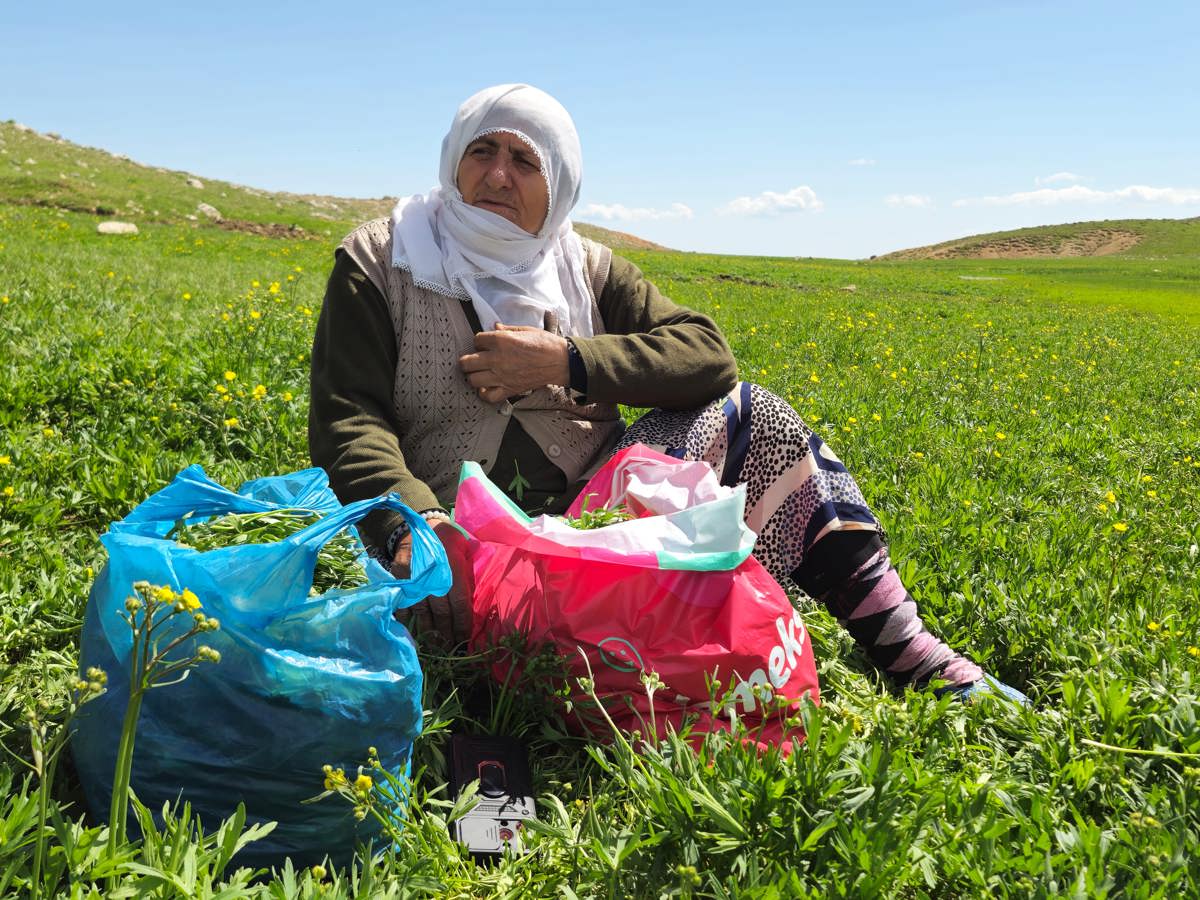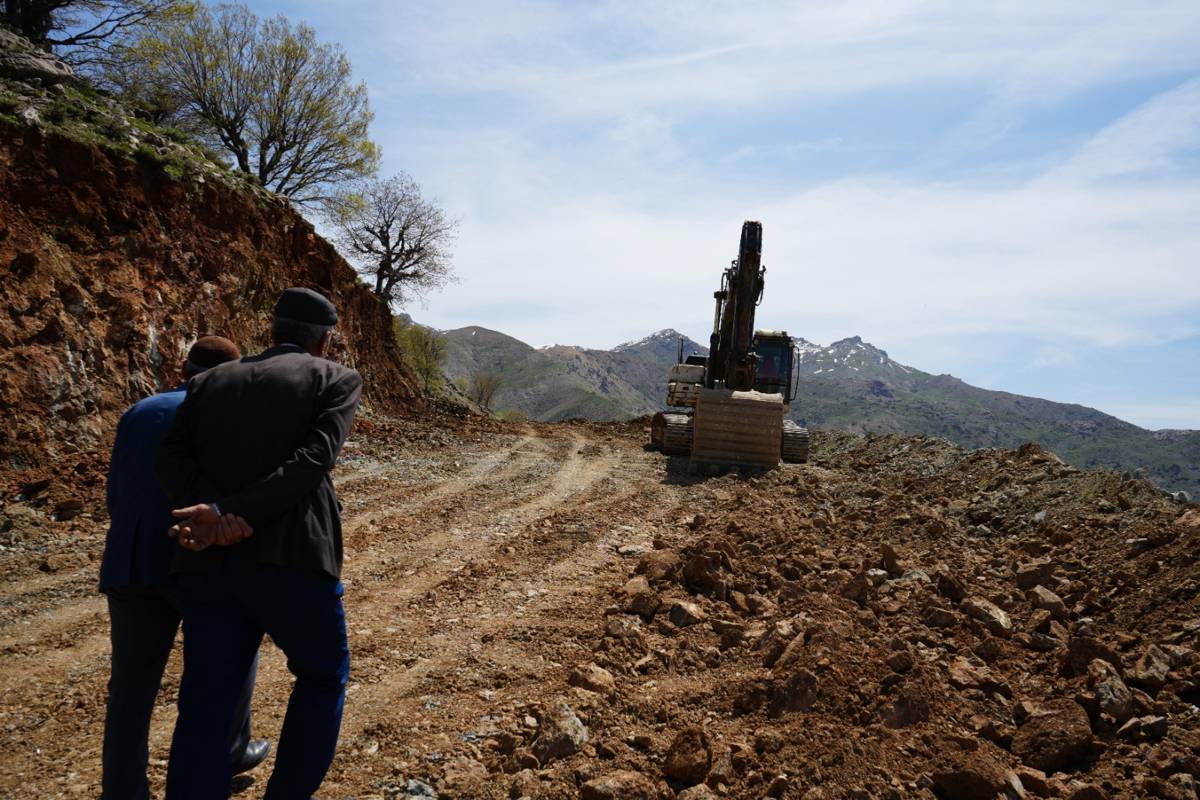In the Hesandin Highland in Diyarbakır’s Kulp district, six villages have been engaged in an ecological struggle against mining companies for 17 years.
In 2008, Kulp Mining and Foreign Trade Inc. obtained an Environmental Impact Assessment (EIA) exemption report unlawfully. Based on this report, the company began exploratory mining activities in Hesandin. However, investigations by the Diyarbakır Bar Association’s Environmental and Urban Law Commission and the Union of Chambers of Turkish Engineers and Architects (TMMOB) revealed that the EIA exemption report had been issued 16 years earlier. They then submitted an information request to the Ministry of Environment, Urbanization and Climate Change.
In response, the Ministry canceled the decision, stating that the company had not undertaken any investment activities within five years.
Following this, the company withdrew from the field. However, it then submitted activity reports from the General Directorate of Mining and Petroleum Affairs (MAPEG) to the Ministry one month later, declaring that “11,000 tons were produced and 1,000 tons sold in 2011; 140.64 tons were produced and sold in 2012; and 1,533.19 tons were produced and sold in 2013. Additionally, 10,000 tons of raw ore remained in stock at the site at the end of 2013.”
The Ministry then reinstated the validity of the initial “EIA not required” decision dated 11.06.2008 with decision number 272.

Every time the company attempted exploration, it faced resistance from villagers and was forced to withdraw. Although the company has not conducted any work in 2025, now only the villagers remain as a barrier to further mining activity.
In April 2025, villagers saw renewed roadwork at the mining site and informed the Diyarbakır Bar Association. When lawyer Ahmet İnan visited the area, security forces protecting the workers claimed that a “military outpost” was being built and the road was for this purpose. The project, however, was not shown to the lawyers.
“We won’t show you the project”
Trees have been uprooted in the area where the road construction has been ongoing for about a month. Lawyer Ahmet İnan, General Secretary of the Environmental and Urban Law Commission, explained why a military outpost is being built during this supposed “peace and ceasefire period”:
“We went to the area after receiving calls from villagers. We saw excavators working under the protection of soldiers. We asked the security forces, ‘What is this? Where is the project plan?’ They said, ‘We won’t show you the project; a military post will be built here.’”
“It may indeed be a military base, but the key issue is that it creates an operational area and a security corridor for the mining company. Villagers had successfully repelled them before.”
“In such a conflict-heavy region, not a single outpost was built over the past 20 turbulent years. Now, even as the state acknowledges the absence of security threats or clashes, and during a declared peace process, constructing a new outpost can’t be explained solely by military concerns. This is more likely part of a security framework designed to protect the companies and open the region to plunder.”

Fear of displacement again
Adalet Eles, from Argün village on the slopes of Hesandin, recounted how, during the village burnings of the 1990s, all but three or four houses in her village were destroyed, forcing many, including herself, to migrate to Kulp center.
She returned and rebuilt her home after the bans were lifted, raised ten children with five or six animals, and is now determined to protect her land, animals, and water sources to avoid being displaced again.
After everything, Eles bid us farewell by saying: “There is no such thing as human rights… It doesn’t exist.”
“Do we go and plunder anyone’s village?”
Azize Can, 64, from Karabulak village, was gathering herbs in the Hesandin Highland when we met her.
She said she has been coming to this highland since birth: “This is my past and my future. Do we go and plunder anyone’s village or nature? Why are they doing this? How can they do this? If they are going to destroy this place, they might as well kill me too. I can’t live anywhere else anymore.”

Bahar Yıldırım, a 22-year-old from Yuvacık village, said her mother grew up in Hesandin. That’s why, before the village is destroyed, she wants to photograph it and hang the pictures in their home. She added that all villagers feel helpless:
“Mining exploration will destroy life here. So, our lives will end too. My family is terrified something will happen here. Just like they’ve plundered everywhere else, they’ll plunder here too. We’ll stand against it.”
“Hesandin is our lifeline”
In a coffeehouse in Kulp center, we met Nevzat Kaya from Ağaçkuru, Faruk Altun from Baloğlu, and Nedim Emre from Kayacık.
Gathered around a table to discuss what to do, Faruk Altun described the potential consequences of mining:
“If this operation begins, our streams will be polluted, dried up, and redirected. This shouldn’t be seen as just a six-village issue. To the east of Kulp is Hesandin, to the south is Silvan Dam, and to the west is the disputed Sarım Basin Dam. Only the mountainous, rocky north remains, where livestock farming is impossible. Essentially, all of Kulp is being destroyed at the hands of companies.”
Nevzat Kaya, a shepherd in Ağaçkuru, added: “If Hesandin’s soil is poisoned, we’ll all lose our water. Livestock farming will end. The highland will be finished. The lives of six or seven villages will be completely over.”
Nedim Emre from Kayacık likened Hesandin to a cauldron: “Hesandin is like a cauldron. It provides water to six villages. Hesandin is our lifeline. If it goes, all six villages go.”
Hesandin Highland

Beginning to green in spring, the Hesandin Highland serves more than just as a grazing area – it is vital to at least six villages.
Residents of Karabulak, Argün, Baloğlu, Yuvacık, Ağaçkuru, and Kayacık cook meals using ten different herb varieties from the highland, also used in traditional medicine.
At the end of May, villagers ascend to the highland, where they stay in tents for around three months, grazing animals. Their livelihoods depend on cattle farming, silkworm cultivation, and beekeeping. Mining threatens to destroy grazing areas and pollute water sources, endangering these practices.
Both livestock and beekeeping rely on water from Hesandin, which is also crucial for silkworm farming.
Diyarbakır’s Kulp district has a strong tradition of silkworm farming, with an average annual yield of 60 tons of fresh cocoons. Some families have passed the craft down through generations. Silk, a major product in Diyarbakır for centuries, still supports hundreds of families. About 60% of Turkey’s silk cocoons and 10% of its silk needs come from Kulp.
In villages full of mulberry trees, silkworms fed with leaves cannot develop properly when water is scarce or during droughts.

Water sources
The pastureland that would be destroyed by the planned mining in the Hesandin Highland would worsen drought conditions. Villagers say the mining operations would cause irreversible harm not only to the people of Kulp but also to nature. The greatest risk is the pollution of water sources that feed into Kulp Creek and reach Batman and Mardin.
About 90% of Kulp’s drinking water comes from Kulp Creek, where hydroelectric power plants (HPPs) are installed. The highland is also a key ecosystem, home to endemic species like the inverted tulip. Villagers recall that Kulp Creek once teemed with freshwater fish, but numbers have plummeted due to the HPPs.
Two hydroelectric plants are currently operational on Kulp Creek: Kulp 1 HPP and Kulp 4 HPP. The Çayönü and Derya HPPs and the Silvan Dam and HPP projects are in planning or construction phases.
Kulp 1 and 4 HPPs have a combined electricity output of 94 GWh, meeting only 1.43% of Diyarbakır’s annual electricity needs. This shows that the existing HPPs on Kulp Creek make a very limited contribution to the city’s energy requirements.

(ED/TY/DT)





